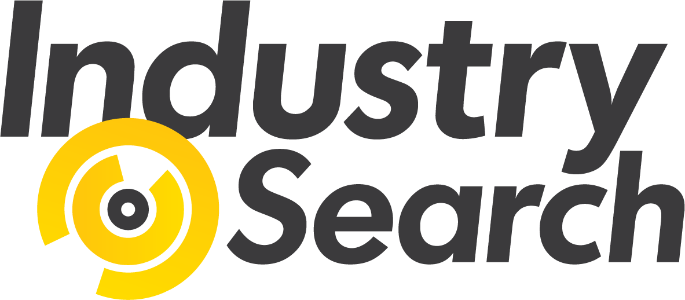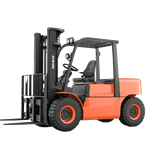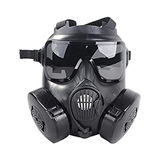Compare used forklift prices and learn what impacts cost. Get insights on fuel types, hours, brands, and hidden fees before you buy.
Key Takeaways
- Electric forklifts: Cost between 8,000 and 40,000 depending on condition and battery life
- LPG forklifts: Typically range from 5,000 to 30,000
- Diesel forklifts: Range from 10,000 to 50,000 or more
- Reach trucks: Priced between 6,000 and 35,000
- Rough terrain forklifts and container handlers: Can reach 60,000+ for heavy-duty models
- The Australian forklift market was worth around USD 1.8 billion in 2024 and is projected to reach over USD 3.5 billion by 2033
- Buying a used forklift can save you 30–50% compared to new models
- Top price factors: capacity, fuel type, hours used, brand, condition, compliance status, features, and location
- Compliance: Must meet AS 2359 and include high-risk work licence for operators
- Financing: Options include leasing, rent-to-own, and equipment loans. Limited warranties may be available from certified dealers
Introduction
If you're considering a used forklift for your Australian business, you're making a financially savvy choice. The used forklift market has grown substantially, with increasing demand from businesses aiming to reduce upfront costs without compromising functionality. This guide gives you everything you need to make a confident decision—from price breakdowns and compliance issues to brand comparisons and maintenance expectations.
Understanding the Australian Used Forklift Market
Market Size and Growth
Australia's forklift market reached approximately USD 1.8 billion in 2024 and is forecasted to exceed USD 3.5 billion by 2033. Some analysts even project growth as high as USD 8 billion, depending on market conditions and uptake of electric models. The compound annual growth rate (CAGR) ranges from 7.5% to 13.5% across different sources.
Buyer Trends
Interest in used forklifts in Australia has surged, especially in urban areas like Sydney and Melbourne. Search demand for second-hand models grew by 20% year-on-year in 2025. Budget-conscious businesses and short-term project managers are driving this demand.
Forklift Price Breakdown by Type
Electric forklifts generally range from 8,000 to 40,000. Their value is heavily influenced by the condition of the battery and total operational hours. These machines are favoured for indoor use due to their zero emissions and quiet operation.
LPG forklifts are available for between 5,000 and 30,000. They provide a good balance between performance and cost and are suitable for both indoor and outdoor applications.
Diesel forklifts come at a higher cost, typically 10,000 to 50,000 or more. They are best suited for heavy-duty tasks and outdoor environments due to their power and durability.
Reach trucks, designed for warehouse and high-shelf operations, are priced between 6,000 and 35,000, depending on lift height and brand.
Rough terrain forklifts and container handlers can cost anywhere from 15,000 to over 60,000. These specialised machines are built for demanding environments such as ports and construction sites.
Key Factors That Influence Pricing
Age and Usage
Forklifts with fewer than 10,000 operating hours command higher prices. Machines with higher hours may still offer value if well maintained.
Brand Recognition
Certain brands tend to hold their value better due to reliability, parts availability, and strong dealer networks.
Fuel Type
Electric models are cheaper to run but require battery replacements. LPG units offer mid-range costs with quick refuelling, while diesel machines, though powerful, incur higher fuel and maintenance expenses.
Service History
A well-documented service history, including recent inspections and refurbishments, can significantly boost resale value and buyer confidence.
Compliance
Ensure the forklift meets AS 2359 standards and comes with valid inspection and safety certifications. Operators must have a state-issued High-Risk Work Licence (HRWL).
Features and Attachments
Additional features such as side-shift, extended forks, or reach capabilities can add between 1,000 to 5,000 to the price.
Regional Variation
Prices tend to be slightly higher in metro areas like Sydney and Melbourne. Freight costs and GST should also be factored into your total budget.
Step-by-Step Buying Process
- Identify your requirements: Consider capacity, lift height, and whether the forklift will be used indoors or outdoors.
- Set a realistic budget: Factor in total cost including maintenance, transport, and attachments.
- Compare multiple suppliers: Obtain at least three quotes from certified Australian dealers.
- Inspect the equipment: Check mast wear, tyre condition, hydraulic function, and hour meter.
- Verify documentation: Ensure service history, inspection certificates, and compliance with AS 2359.
- Ask about warranties: Some dealers offer limited warranties on certified units.
- Evaluate financing options: Leasing, rent-to-own, and business equipment loans are widely available.
- Plan for maintenance: Regular inspections, fluid changes, and tyre replacements should be budgeted annually.
Maintenance and Cost of Ownership
Electric forklifts offer lower long-term costs but may require battery replacements. LPG and diesel models are more affordable upfront but come with higher fuel and engine maintenance costs. Most depreciation occurs within the first two years, making well-maintained two to three-year-old models a smart buy.
Sustainability Trends
There is a growing shift toward electric forklifts driven by environmental standards and government incentives. These machines are becoming more affordable and popular, especially in logistics and warehousing.
FAQs
What is the average cost of a used forklift in Australia?
Depending on type and condition, prices typically range from 5,000 to 50,000.
How much can I save by buying used?
You can expect to save 30–50% compared to purchasing a new forklift.
Are electric forklifts cheaper to operate?
Yes, they have lower fuel and maintenance costs but require expensive battery replacements every few years.
What kind of licence do I need?
Operators need a High-Risk Work Licence (HRWL) specific to their state and forklift class.
Is buying from a dealer safer than a private sale?
Yes. Certified dealers often offer limited warranties, service support, and verified compliance documentation.
Are financing options available?
Yes. Leasing, rent-to-own, and business equipment loans are commonly used by Australian businesses.
Should I buy an LPG or diesel model?
LPG is ideal for mixed-use environments and offers moderate fuel costs. Diesel is better suited for outdoor, high-capacity tasks.
How important is compliance?
Crucial. Non-compliance can result in fines, insurance issues, and operational downtime. Always verify that the forklift meets AS 2359 and includes relevant certificates.
Final Tips
To ensure a sound investment, define your operational needs, work within your budget, and only buy from reputable dealers. Don’t forget to inspect thoroughly and request documentation. With rising demand for sustainable and cost-effective machinery, now is a great time to explore the used forklift market in Australia.
For a more detailed exploration of used forklift prices, buying tips, and expert insights tailored to Australian buyers, check out the comprehensive guide here: Used forklifts price and buying guide: What you need to know.










-160x160-state_article-rel-cat.png)


